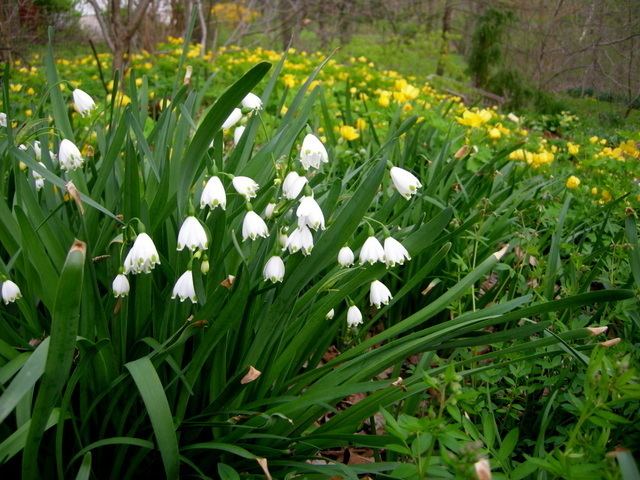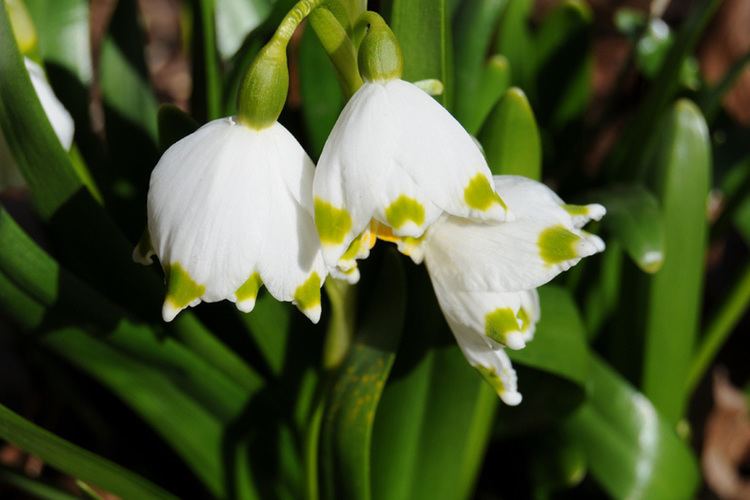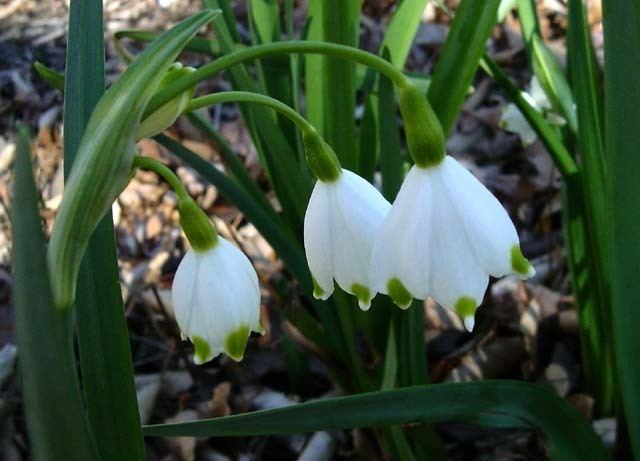Clade Monocots Rank Species | Clade Angiosperms Higher classification Leucojum | |
 | ||
Similar Leucojum, Leucojum vernum, Amaryllidaceae, Snowdrop, Galanthus nivalis | ||
Summer snowflake leucojum aestivum 2015 04 03
Leucojum aestivum, commonly called summer snowflake, is a plant species widely cultivated as an ornamental. It is native to most of Europe from Spain and Ireland to Ukraine, with the exception of Scandinavia, Russia, Belarus and the Baltic Republics. It is also considered native to Turkey, Iran and the Caucasus. It is naturalized in Denmark, South Australia, New South Wales, Nova Scotia and much of the eastern United States.
Contents

Leucojum aestivum is a perennial herb up to 60 cm tall. It has bulbs up to 4 cm across. Leaves are long and narrow, up to 70 cm long. Flowers are nodding, up to 7 per umbel; tepals white with a yellow-green spot near the tip.

Leucojum aestivum is known to contain Galantamine (Nivalin, Razadyne, Razadyne ER, Reminyl, Lycoremine in pharmaceutical format). It is used for the treatment of mild to moderate Alzheimer's disease and various other memory impairments, in particular those of vascular origin. It is an alkaloid that is obtained synthetically or from the bulbs and flowers of Galanthus, and some other members of the family Amaryllidaceae such as Narcissus (daffodil), Leucojum aestivum (snowflake), and Lycoris including Lycoris radiata (red spider lily).
The Loddon Lily (another name for Leucojum aestivum) is almost wholly associated with rivers. After flowering in April or May, when it is pollinated by bees, the fruits develop flotation chambers. The fruit remain attached to the stem, in the event of flooding the stems break and the fruits are carried downstream and stranded in river debris or on flood-plains. The bulbs can also be transported during heavy floods and deposited on river banks.

Leucojum aestivum l


